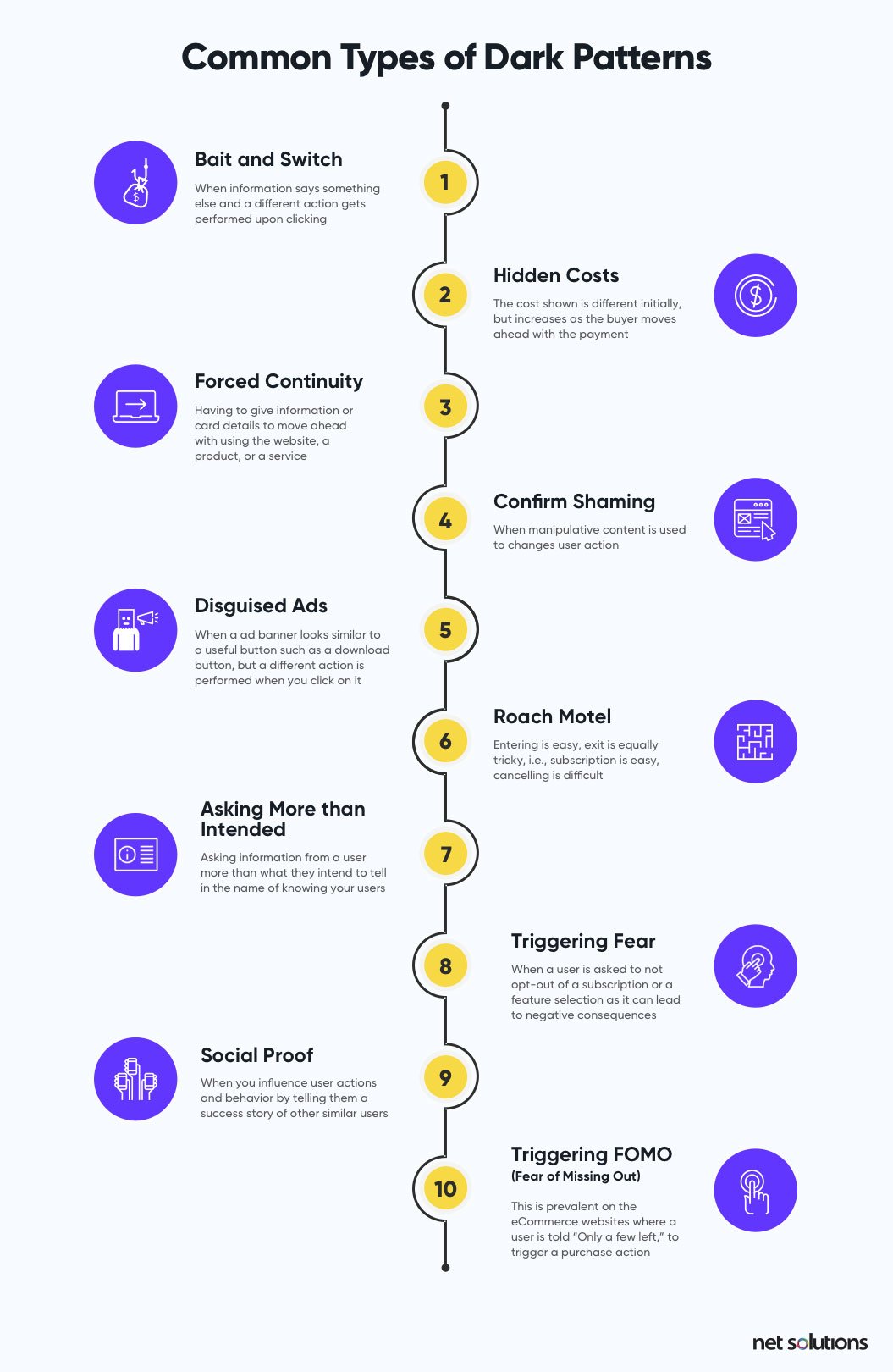
Digital Dacoity: Curbing Dark Patterns
Companies tricking users for money & personal-data
Click for Hindi Translation
The Department of Consumer Affairs (DCA) has released draft guidelines to prevent dark patterns.
What are Dark Patterns?
A dark pattern is a user interface design that intentionally misleads users into making a decision that is not in their best interests.

Just as Robbers & Dacoits use violence and intimidation to rob their victims, dark patterns use deception and manipulation to rob consumers of their money and personal data. It can take many forms, such as:
- Hidden fees: Charging users for services without their explicit consent.
- Forced bundling: Forcing users to purchase unwanted products or services in order to purchase a desired product or service (ex. subscriptions, donations, trip insurance etc).
- Designed to confuse: Using confusing language or layouts to make it difficult for users to understand their options or make informed decisions.
The DCA’s draft specifies 10 types of dark patterns:
False urgency, basket sneaking, confirm shaming, forced action, subscription trap, interface interference, bait and switch, drip pricing, disguised advertising, and nagging.
These guidelines prohibiting deceptive patterns will apply to all platforms, advertisers, and sellers. Working In tandem with e-Commerce (Consumer Protection) Rules 2020 and the guidelines for Prevention of Misleading Advertisements, 2022.
Around the Globe
- United States: The Federal Trade Commission (FTC) has issued an enforcement policy on dark patterns and is seeking public input to modernize its disclosure guidance to address the ubiquitous use of dark patterns.
- California has passed consumer privacy legislation (CCPA) banning the use of dark patterns. US has been trying to pass the DETOUR (Deceptive Experience To Online Users Reduction) Act and the broader SAFE DATA Act.
- European Union: The EU has multiple regulations that discuss dark patterns and that may be used as a tool to protect consumers, namely- GDPR, DSA, DMA, and the Unfair Commercial Practices Directive (UCPD), as well as proposed regulations such as the AI Act and Data Act. The DSA specifically prohibits deceptive or nudging techniques, including dark patterns, that could distort or impair a user’s free choice.
- United Kingdom: The UK has an “Online Rip-Off Tip-Off” campaign that encourages consumers to spot and report misleading selling tactics. GDPR has been the primary basis for protection baselines, although several agencies are in progress to release detailed reports/guidelines on deceptive patterns (ex. The Competition and Markets Authority (CMA), Information Commissioner’s Office-ICO & Advertising Standards Authority-ASA)
India’s Ministry of Consumer Affairs notified that complaints to report any dark patterns can be made on the National Consumer Helpline. However, it is to be noted that NCH generally lacks the mandate to enforce any action, and only acts as a mediator.
The DCA’s guidelines are a welcome step towards protecting consumers as it will establish a solid legal ground for complaints.
Further reading:
Explainer by Finshots
Technical article by netsolutions
WBD Report: Regulatory-deep-dive-patterns
Written by Prajakta Pradhan (National Law University, Lucknow)





